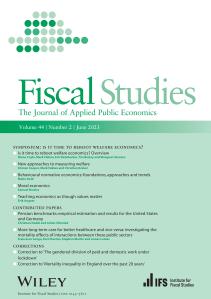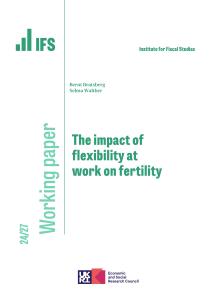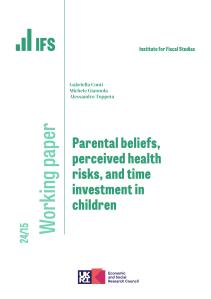The COVID-19 pandemic has led to substantial increases in councils’ expenditure and falls in their locally generated revenue, especially from sales, fees and charges (SFCs) and commercial activity. Our previous analysis has looked at ex ante measures of English councils’ financial risk and resilience in the context of the pandemic, and forecasts and other rapidly available indicators of the potential impacts of the pandemic on councils’ spending and incomes. This briefing note examines impacts for English councils using outturns data for 2020–21, compares these with expectations based on ex ante and rapidly available indicators, and considers the implications for both councils’ current financial resilience and how the financial impacts of future extreme adverse shocks should be monitored.
Key findings
- English councils were last surveyed by the government on the financial impacts of the COVID-19 pandemic in 2020–21 in April 2021. At this time, councils reported an increase in gross expenditure on non-education services of £6.7 billion, of which approximately £1 billion was covered by transfers from the NHS to cover additional adult social care costs. Reductions in SFCs income were estimated at £2.1 billion. This would mean an increase in net expenditure of £8.8 billion before accounting for the extra NHS transfers, or £7.8 billion after accounting for them.
- Actual council expenditure and revenue outturns data for 2020–21 were published in December 2021. These show councils’ net expenditure on non-education services increasing by £6.3 billion compared with the previous year. However, an increase of approximately £2.2 billion would have been expected in the absence of the pandemic, based on pre-pandemic budgets. This suggests the pandemic itself was associated with an increase in net expenditure of around £4.1 billion, not much more than half that previously reported by councils in their survey responses.
- We cannot conclude that councils purposefully overstated the financial impacts of the COVID-19 pandemic. First, the surveys asked councils to identify increases in expenditure as a result of the pandemic, not areas where spending was lower. And there were areas where spending was reduced – for example, gross spending on culture and leisure services fell, driven by a 44% reduction in spending on ‘theatres and public entertainment’, likely due to lockdown measures. Second, some councils may have erroneously recorded part of their grant funding as ‘other income’, artificially depressing the change in their net expenditure – although this is unlikely to explain more than a small part of the discrepancy.
- The scale of changes in expenditure and SFCs income across service areas varies significantly. Relative to what one might have expected in the absence of the pandemic, central and other services (+£1.3 billion), adult social care services (+£0.9 billion) and highways and transport (+£0.8 billion) saw the biggest increases in net expenditure. The first two were largely driven by higher gross expenditure, while the last was driven overwhelmingly by lower SFCs income, especially from parking. Public health also saw a notable increase in gross expenditure and culture and leisure services a big fall in SFCs income. In contrast, spending on children’s social care services actually increased by somewhat less than might have been expected.
- There was also significant variation in changes in expenditure and SFCs income across councils. The median council saw its per-capita net spending on services increase by 14.7% year-on-year, but a fifth of councils reported an increase in spending of over a third. Nine-in-ten councils saw their total income from sales, fees and charges fall, with the median change being a fall of 18%.
- If another extreme adverse shock were to take place, the government would almost certainly wish to survey councils on the expected financial impacts, to guide its decisions over funding. However, based on experience in 2020–21, it should subject a proportion of survey responses to vetting and enquire about areas where spending is expected to be lower as well as those where it is expected to be higher. Ex ante analysis of councils’ financial risk and resilience may also be worthwhile: the indicators of reliance on SFCs income and financial reserves included in our ‘dashboard’ published in June 2020 are predictors of subsequent financial impacts.
- The increase in councils’ net expenditure in 2020–21 was substantially lower than the increase in funding that councils received – which had been informed by the (higher) survey-based estimates of the financial impacts of the pandemic. This means the financial position of the sector as a whole as it entered the current financial year, 2021–22, was better than was generally appreciated. And it may provide a justification for the government to have not met in full the additional financial pressures in 2021–22 identified by councils in their survey responses. Not unreasonably, most councils could instead draw down unused funding from last year (and the government may expect the final increase in net expenditure to again be lower than suggested by the survey responses).
- However, some councils clearly have seen their financial positions deteriorate, sometimes significantly, during the COVID-19 pandemic. For example, while outturns data suggest a smaller increase in net expenditure by shire districts than would have been expected based on their survey responses, this does not mean they were ‘over-compensated’ for pandemic-related costs in 2020–21. This is because, in contrast to other council types, previous survey-based estimates of the financial impact of the COVID-19 pandemic suggested shire districts had been ‘under-compensated’.
- More significantly, seven councils were granted enhanced borrowing powers in 2020–21 and, in Croydon’s case, a halt to new non-essential expenditure was also necessary. Moreover, rising demands and costs for social care services in particular mean the government should not underestimate the financial challenges facing the sector as a whole in the medium-to-longer term.










